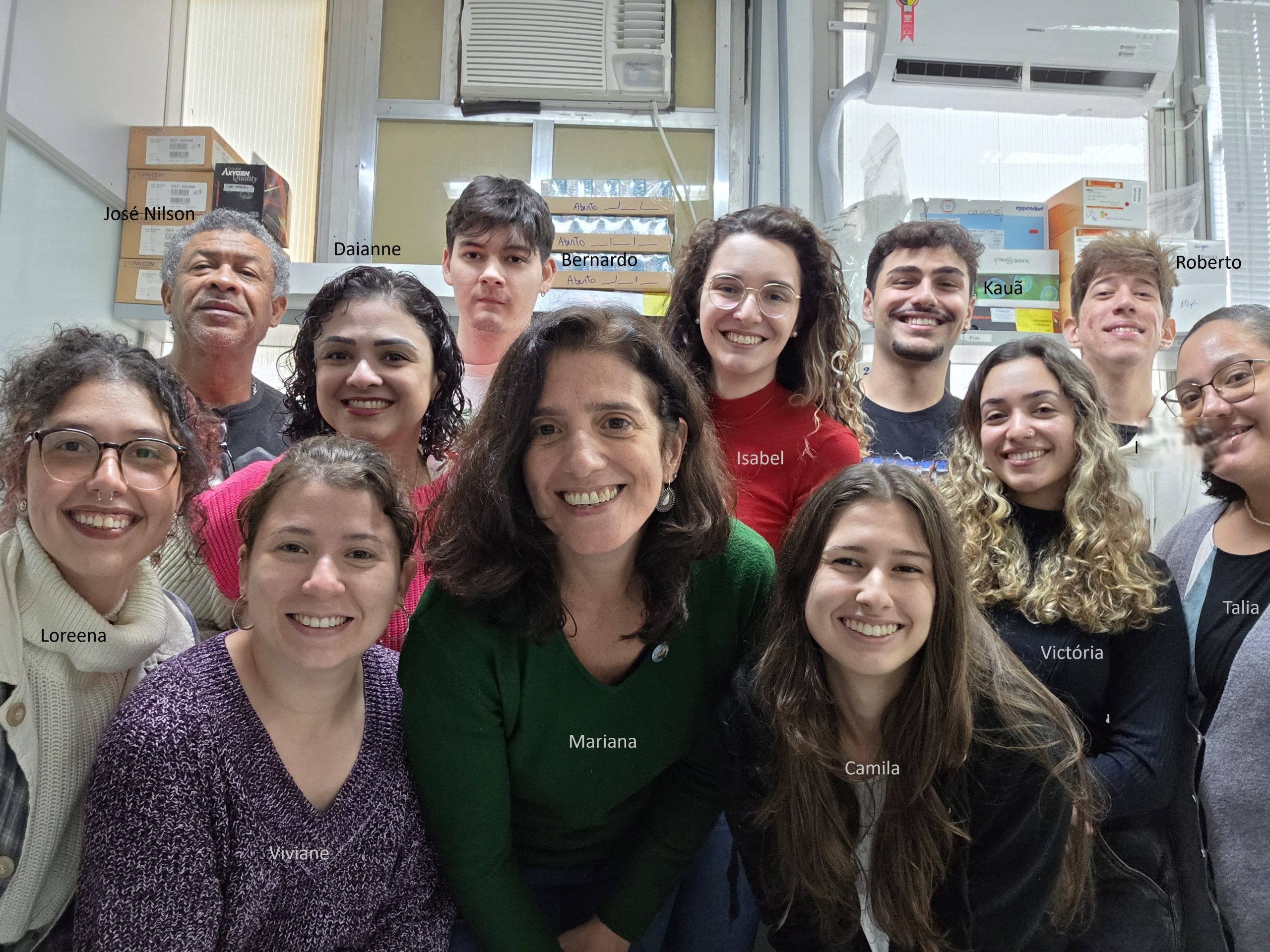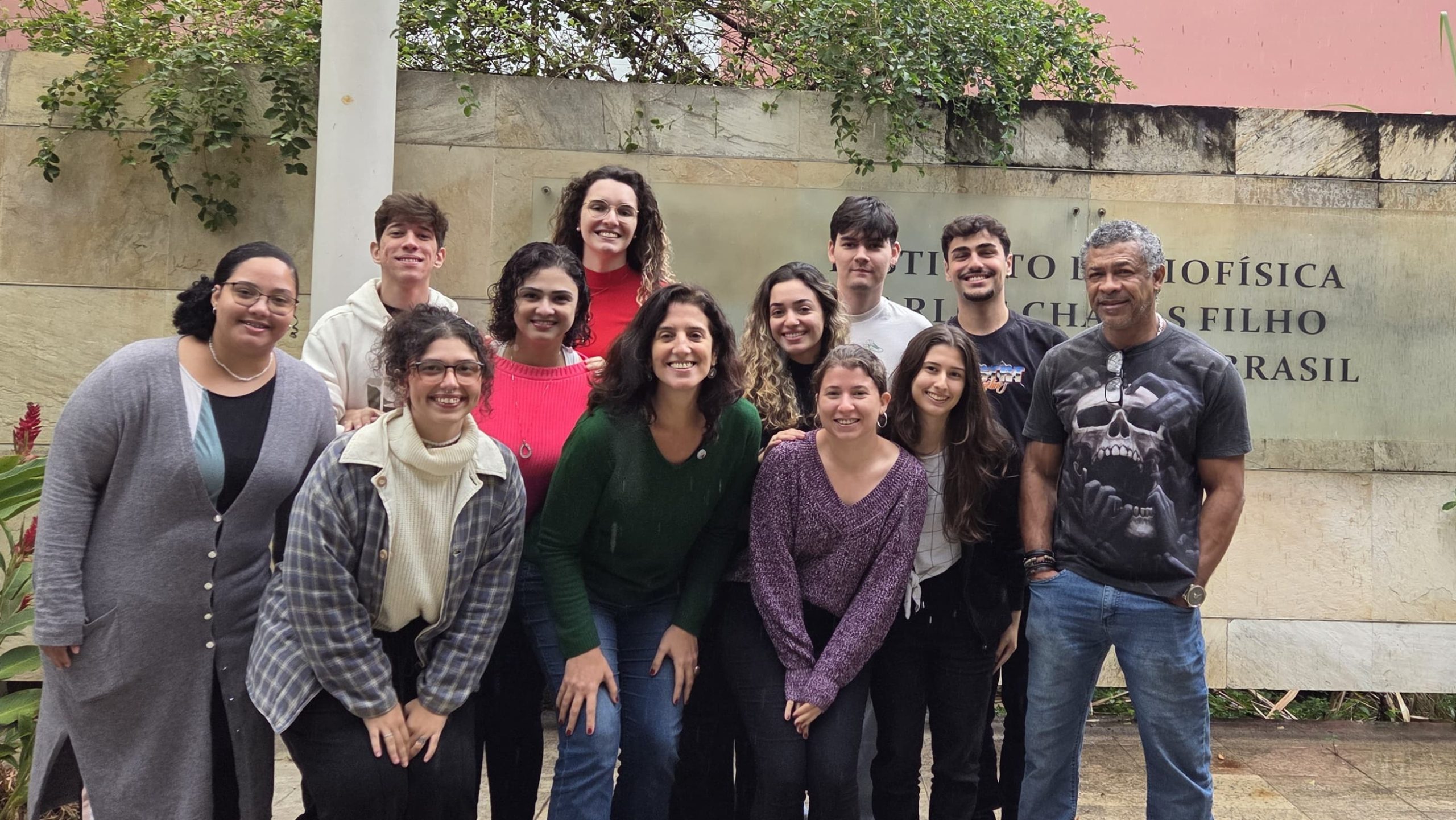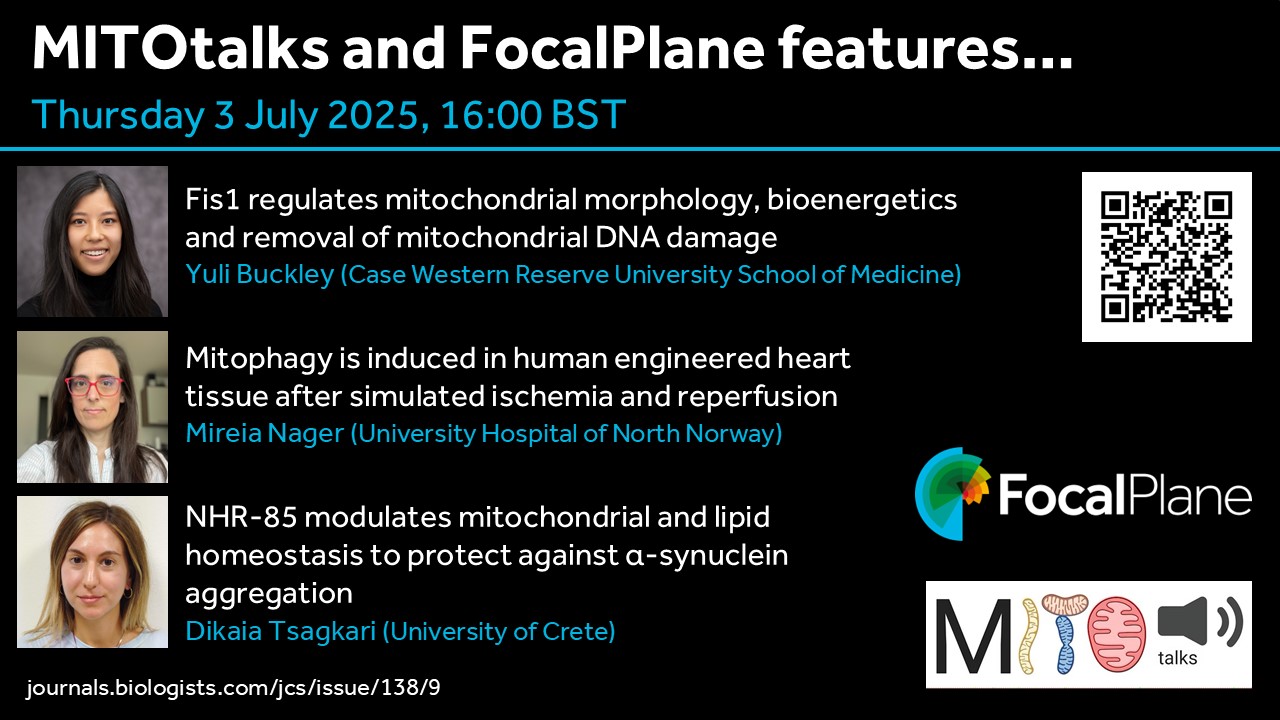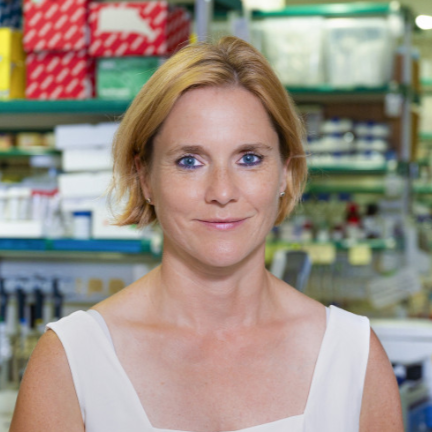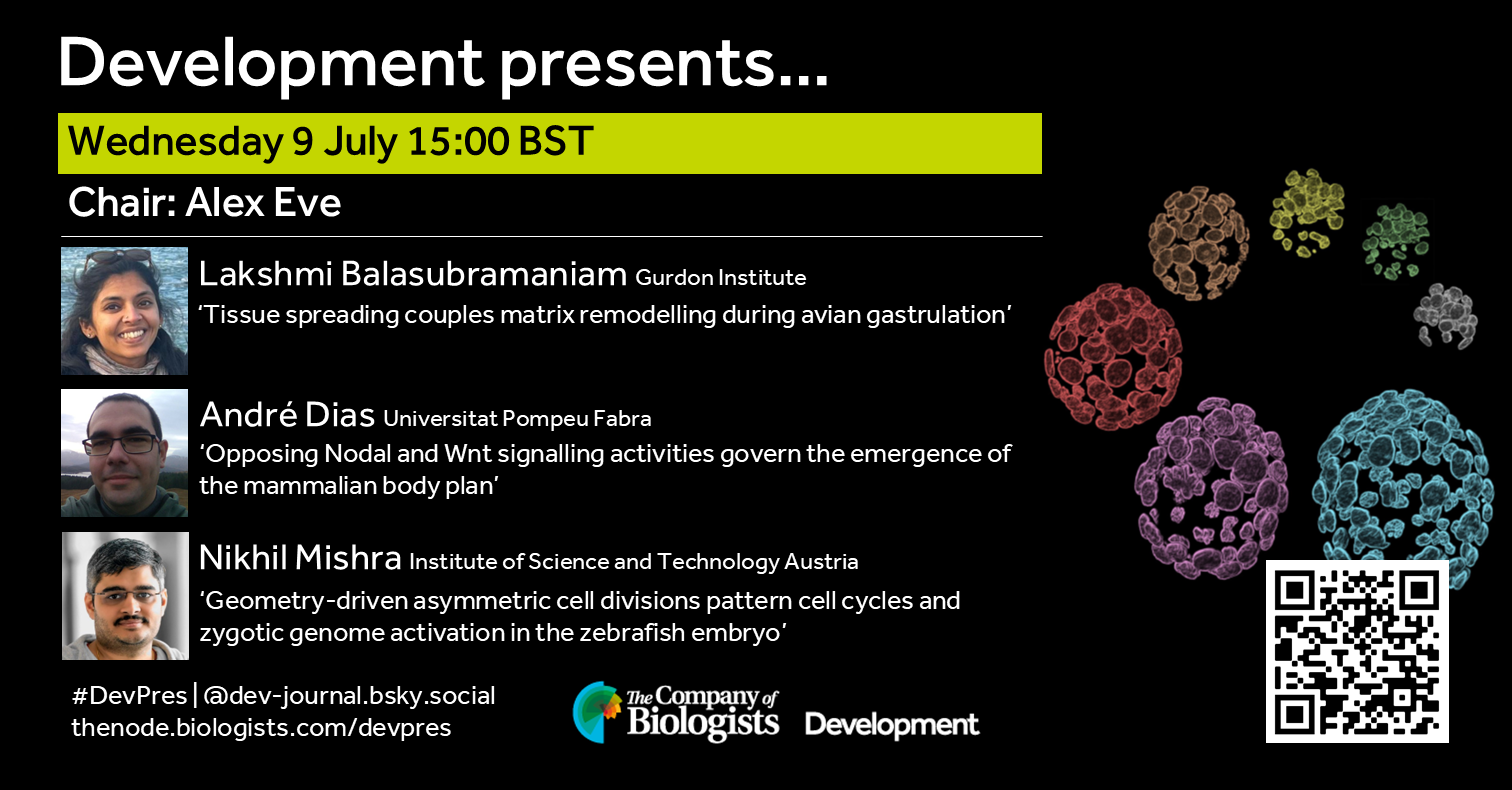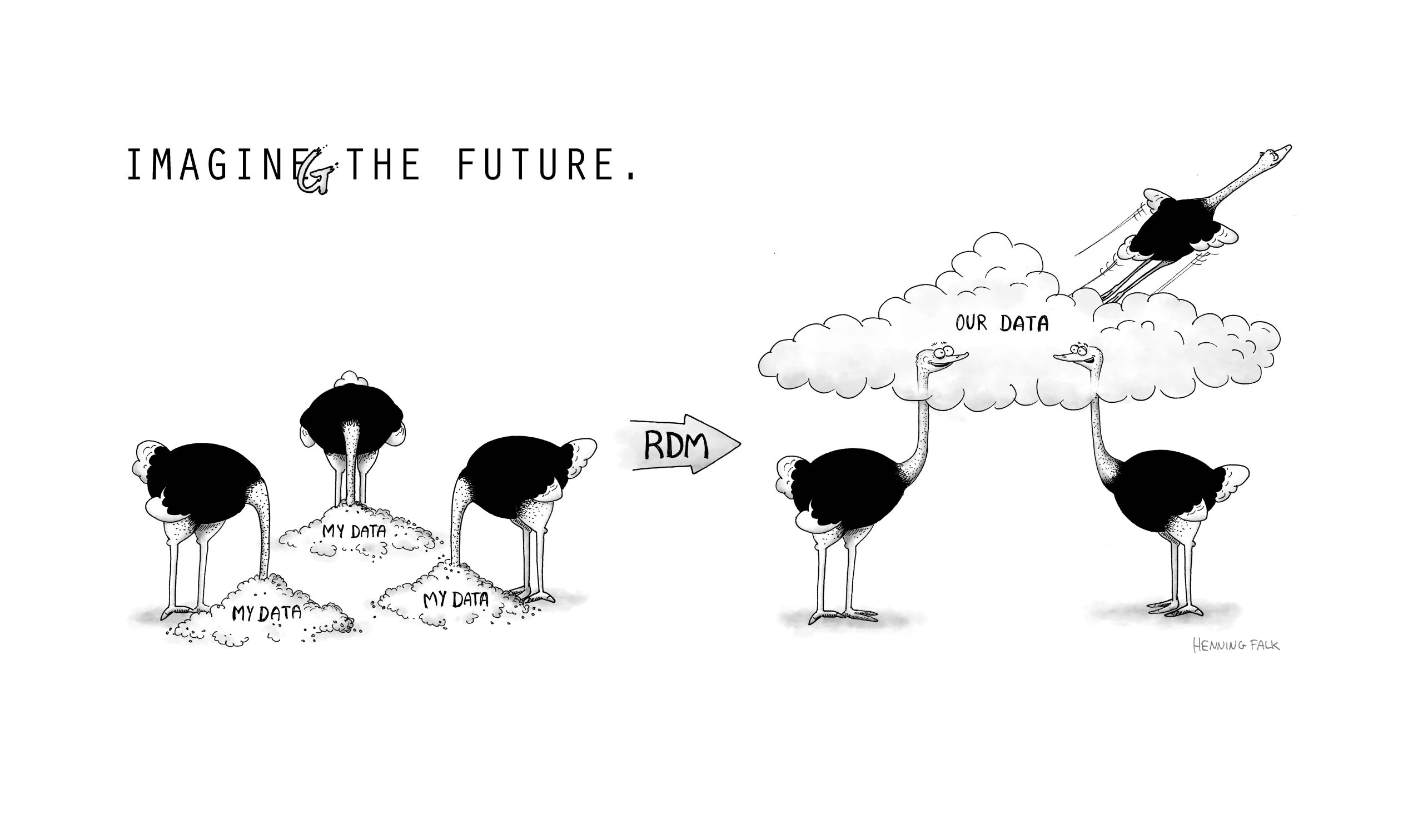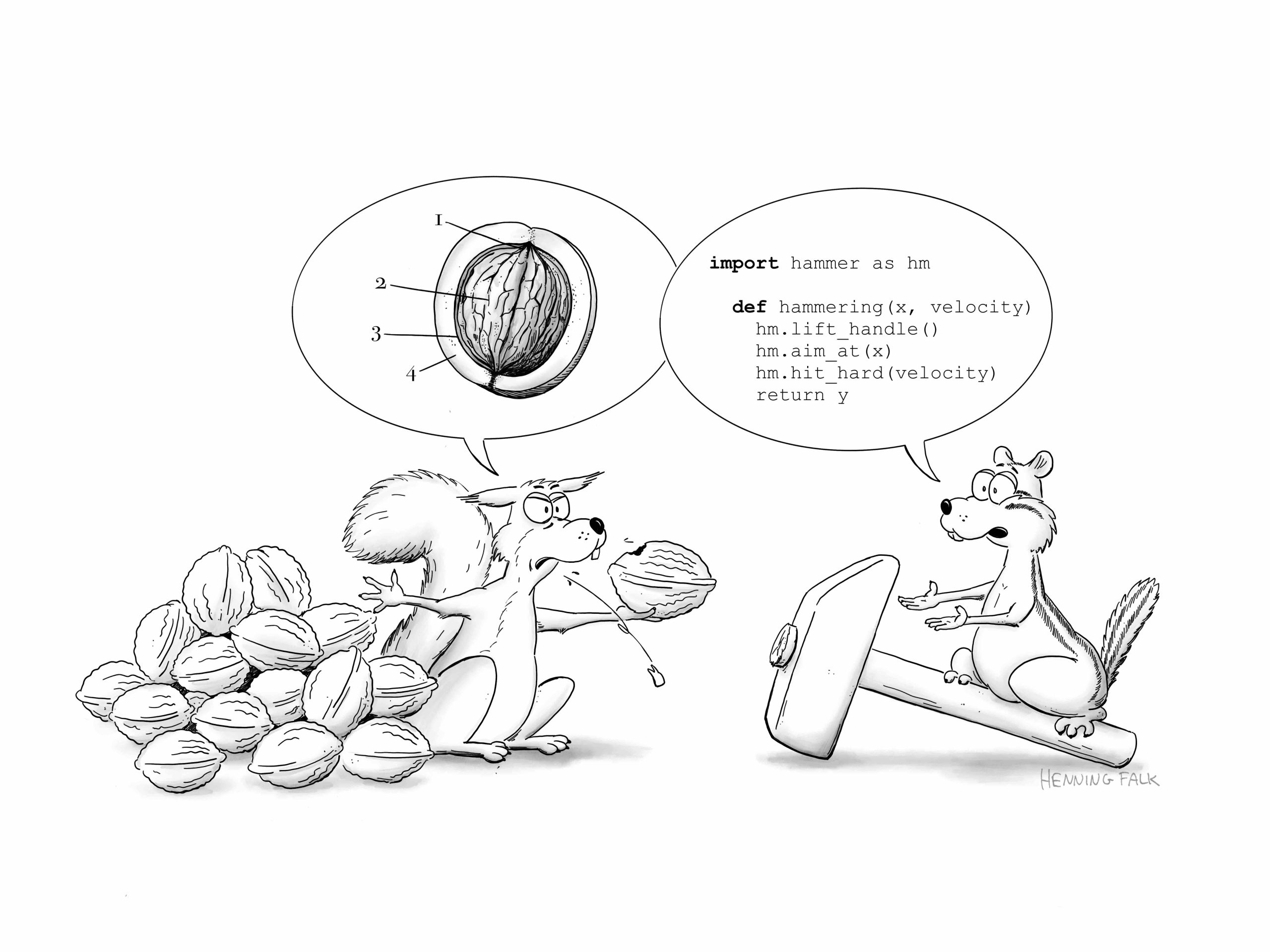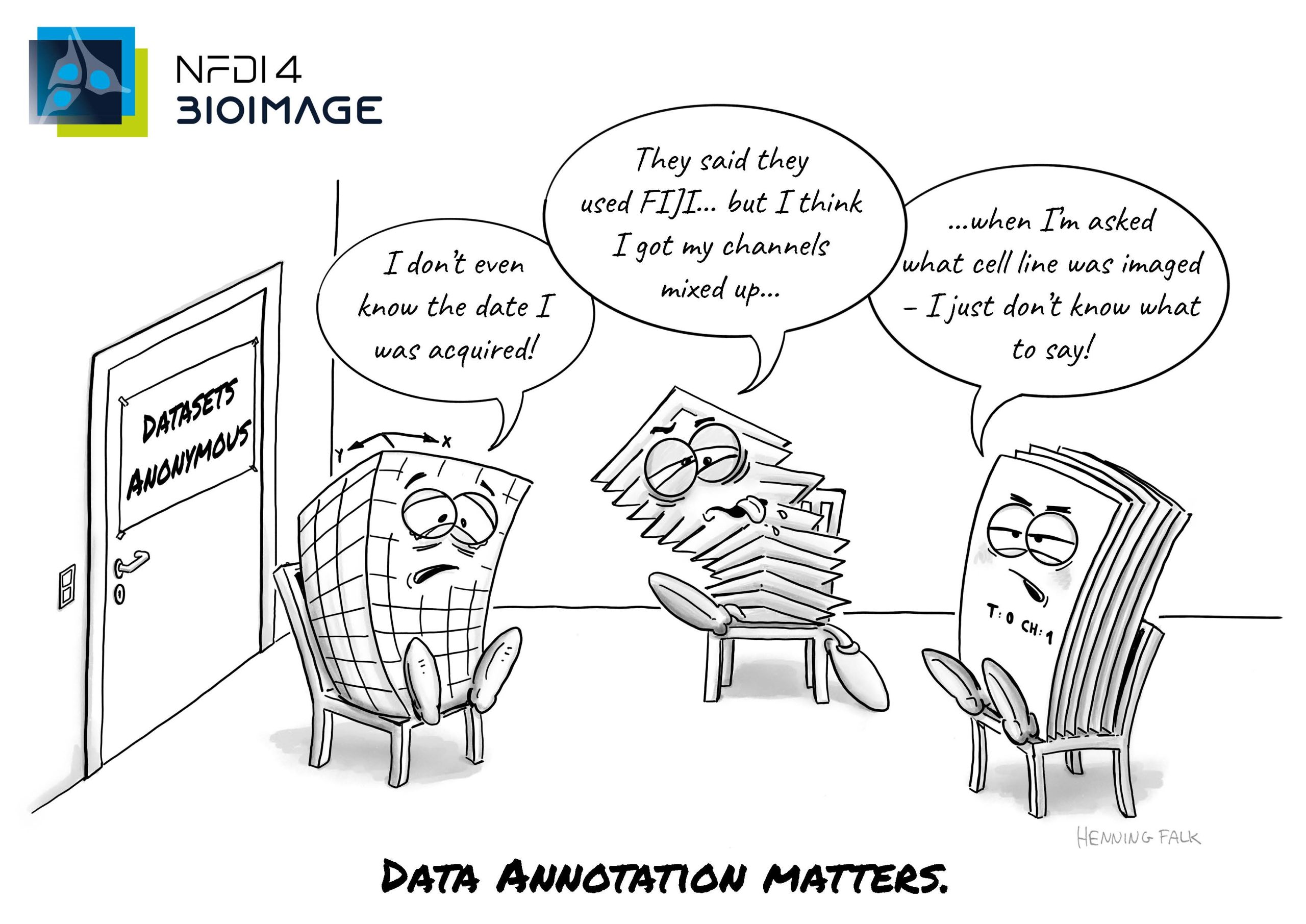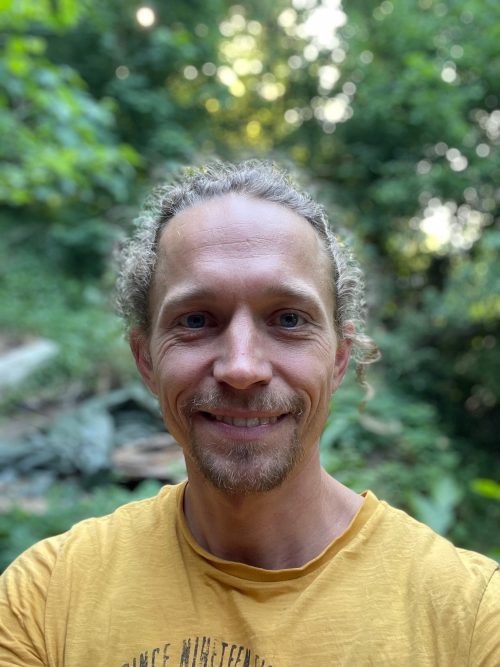June in preprints
Posted by the Node, on 7 July 2025
Welcome to our monthly trawl for developmental and stem cell biology (and related) preprints.
The preprints this month are hosted on bioRxiv and arXiv – use these links below to get to the section you want:
- Patterning & signalling
- Morphogenesis & mechanics
- Genes & genomes
- Stem cells, regeneration & disease modelling
- Plant development
- Environment, evolution and development
Spotted a preprint in this list that you love? If you’re keen to gain some science writing experience and be part of a friendly, diverse and international community, consider joining preLights and writing a preprint highlight article.
Developmental biology
| Patterning & signalling
FGF receptor modulates planar cell polarity in the neuroectoderm via Vangl2 tyrosine phosphorylation
Ilya Chuykin,Sergei Y. Sokol
Retinal Calcium Waves Coordinate Uniform Tissue Patterning of the Drosophila Eye
Ben Jiwon Choi, Yen-Chung Chen,Claude Desplan
Xuedong Kang, Joan Moci, Charlotte Wolf,Marlin Touma
Mathieu Preußner, Anna Mertens, Marion Basoglu,Virginie Lecaudey
Ravindra B. Chalamalasetty, Haley Tran, Ryan Kelly, Samuel Kuo,Mark W. Kennedy,Moonsup Lee, Sara Thomas,Nikolaos Mandalos,Vishal Koparde,Francisco Pereira Lobo,Terry P. Yamaguchi
Camilla Autorino,Diana Khoromskaia,Louise Harari, Elisa Floris, Harry Booth,Cristina Pallares-Cartes, Vesta Petrasiunaite,Michael Dorrity,Bernat Corominas-Murtra,Zena Hadjivasiliou,Nicoletta I. Petridou
Carlos Jiménez-Jiménez,Gustavo Aguilar,Clara Fernández-Pardo,Markus Affolter,Isabel Guerrero
Paul Knabl, June F. Ordoñez,Juan Daniel Montenegro Cabrera,Tim Wollesen,Grigory Genikhovich
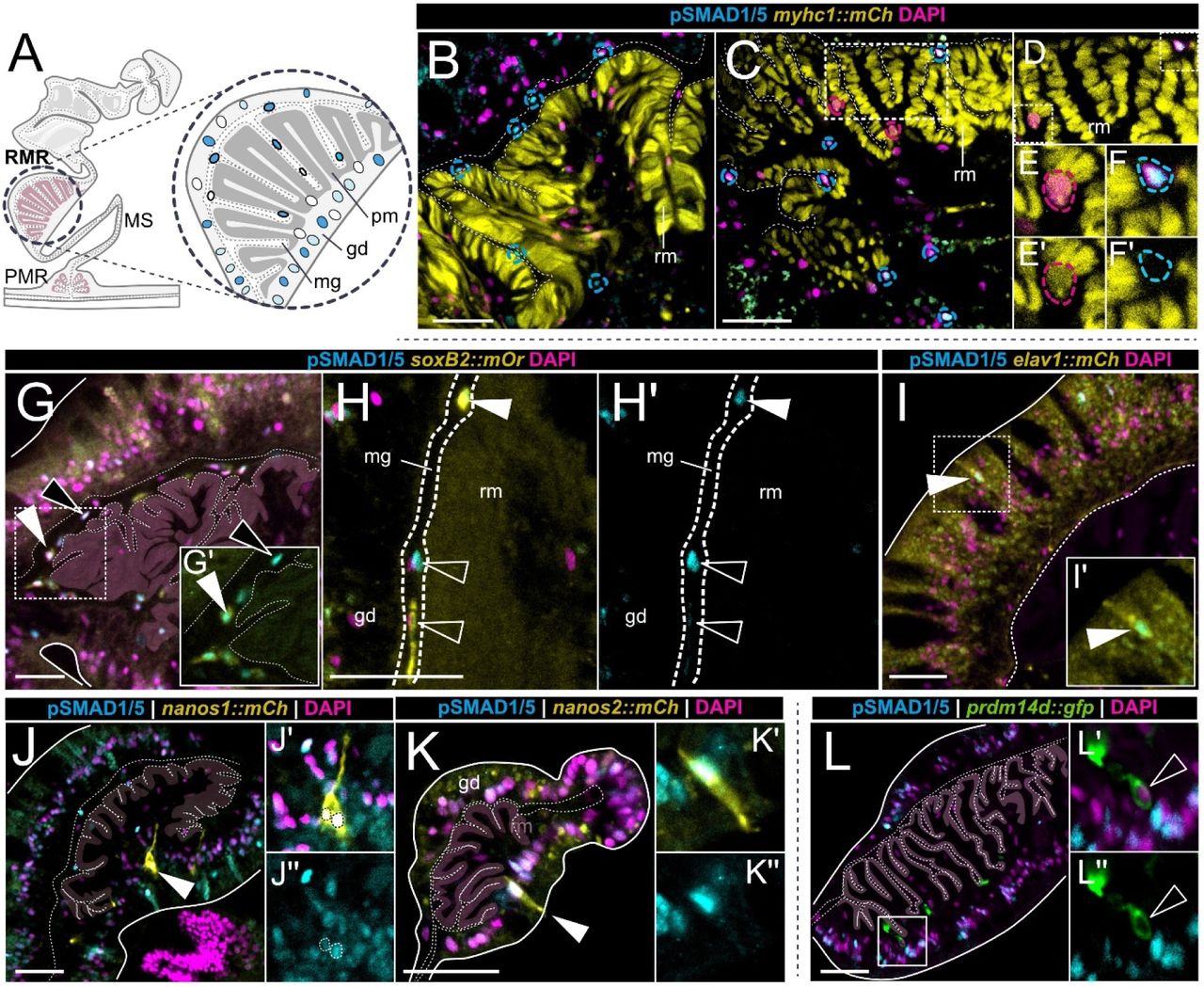
Siqi Du,Aryeh Warmflash
Gaurav Singh Rathore, Matias Ankjær, Pedro Rifes, Erno Hänninen, Fátima Sanchís Calleja, Charlotte Rusimbi, Janko Kajtez, Amalie Holm Nygaard, Louise Saviø Piilgaard, Ugne Dubonyte, Zehra Abay-Nørgaard, Jens Bager Christensen, Kristoffer Lihme Egerod, J. Gray Camp, Tune H Pers, Barbara Treutlein, Agnete Kirkeby
Rapid transcriptional response to a dynamic morphogen by time integration
Susanna E. Brantley, Jacqueline Janssen, Anna Chao, Massimo Vergassola, Shelby A. Blythe,Stefano Di Talia
Desert Hedgehog mediates stem Leydig cell differentiation through Ptch2/Gli1/Sf1 signaling axis
Changle Zhao, Yongxun Chen, Lei Liu, Xiang Liu, Hesheng Xiao, Feilong Wang, Qin Huang, Xiangyan Dai, Wenjing Tao, Deshou Wang,Jing Wei
GATA6 Mediates Endoderm and Mesoderm Progenitor Fate Driven by WNT and NODAL Signaling
Miriam Gordillo, Rebecca Wu, Kelly M. Banks, Neranjan de Silva,Todd Evans
Auriana Arabpour, Jonathan Adam DiRusso, Qiu Ya Wu, Mark Larsen, Young Sun Hwang, Elsie Jacobson, Thi Xuan Ai Pham, Nicole Agranonik, Megan Sparrow, Vernon Leander Monteiro, Zenya Rebecca Bian, Nicolas Pelaez-Restrepo, Antuca Callejas-Marin,Vincent Pasque,Kathrin Plath, Amander T. Clark
An advanced head-to-tail mouse embryo model with hypoxia-mediated neural patterning
Anastasios Balaskas,Isabelle Kraus, Hatice Ö. Özgüldez,Persia Akbari Omgba,René Buschow,Adriano Bolondi,Idan Berlad,Jacob H. Hanna,Helene Kretzmer,Aydan Bulut-Karslioğlu
YAP1 and QSER1 are Key Modulators of Embryonic Signaling Pathways in the Mammalian Epiblast
Elizabeth Abraham, Thomas Roule, Aidan Douglas, Emily Megill, Olivia M. Pericak, Jordan E. Howe, Carmen Choya-Foces, Joanne F. Garbincius, Henry M. Cohen, Paula Roig-Flórez, Mikel Zubillaga, Mark D. Andrake, Seonhee Kim, John W. Elrod, Naiara Akizu, Conchi Estaras
| Morphogenesis & mechanics
Hanna-Maria Häkkinen,Soraya Villaseca, Zain Alhashem, Szymon Chomiczewski, Maxime Desevedavy, Solene Leleux, Atrin Hamidzadeh, Filomena Gallo, Dina El-Zohiry, Victor Petre,Elena Scarpa

Embryonic development of C. elegans sense organs
Leland R. Wexler,Irina Kolotuev,Maxwell G. Heiman
Carmen Sánchez Moreno,Alexander V. Badyaev
A method for analysing tissue motion and deformation during mammalian organogenesis
Morena Raiola, Isaac Esteban,Kenzo Ivanovitch, Miquel Sendra,Miguel Torres
Satheeja Santhi Velayudhan, Chih-Wen Chu, Keiji Itoh,Sergei Y. Sokol
Stiffness sensing fuels matrix-driven metabolic reboot for kidney repair and regeneration
Yuan Gui, Yuanyuan Wang, Wenxue Li, Jia-Jun Liu, Kelly Zheng, Jianzhong Li, Henry Wells Schaffer, Cameron Jones, Samantha Mae Mallari,Yanbao Yu, Silvia Liu,Yansheng Liu,Dong Zhou
Jian Xiong Wang,Yanina D. Alvarez,Siew Zhuan Tan,Samara N. Ranie,Samantha J. Stehbens,Melanie D. White
Resilience in zebrafish embryoids
Svetlana Jovanic, Julia Eckert, Thierry Savy,Nadine Peyrieras
Maternal exercise rescues fetal akinesia-impaired joint and bone development
Christopher J. Panebianco, Yuming Huang,Nidal Khatib,Devin C. Gottlieb,Maha Essaidi,Saima Ahmed,Nathaniel A. Dyment,Rebecca A. Simmons,Joel D. Boerckel,Niamh C. Nowlan
| Genes & genomes
piRNAs are abundant in the early embryo of the crustacean Parhyale hawaiensis
Llilians Calvo,Tom Pettini,Guillem Ylla,Matthew Ronshaugen,Sam Griffiths-Jones
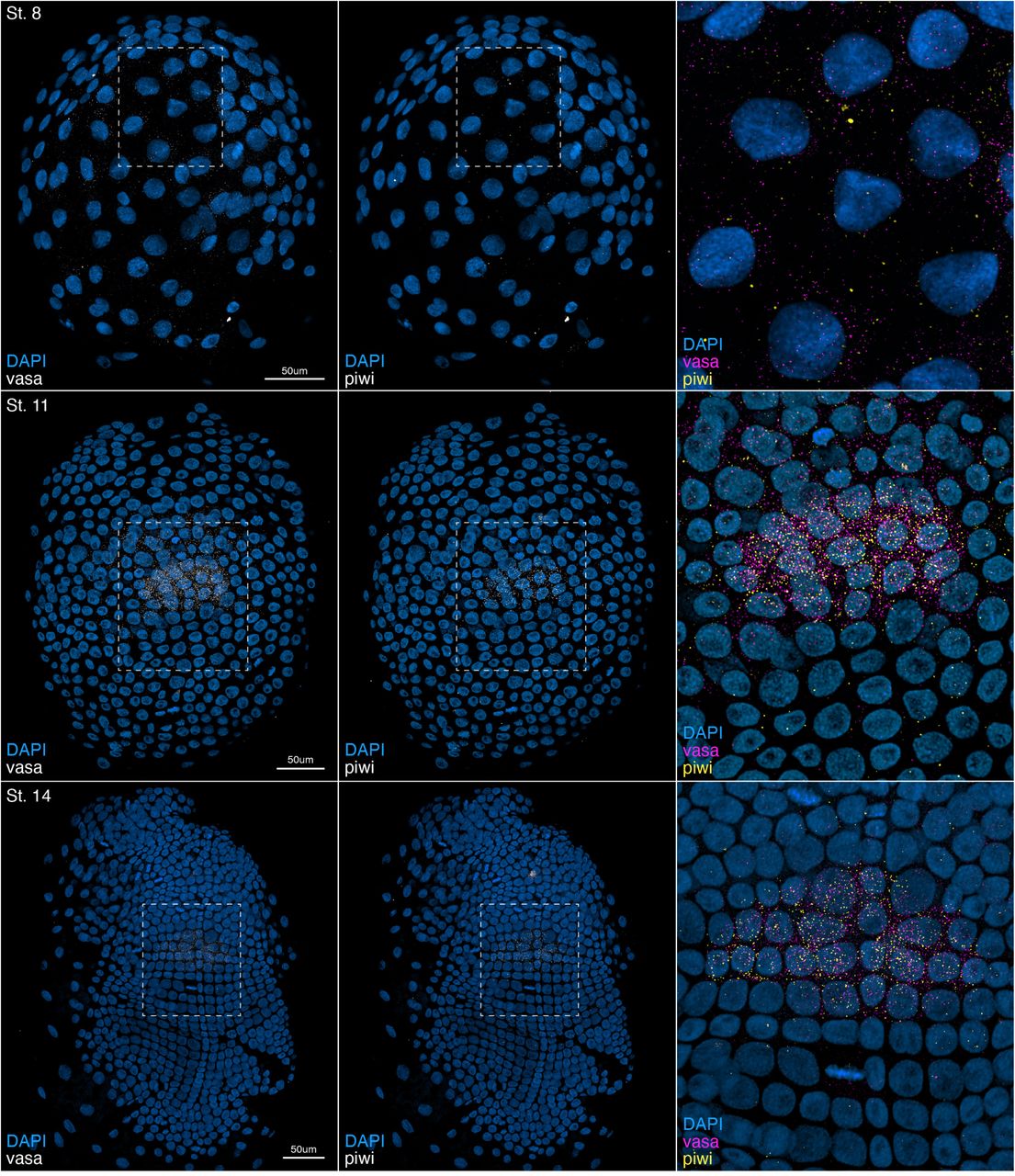
Rose M. Doss, Sara A. Wirth, Jonathan W. Pitsch, Caroline M. Dias, Andrea L. Gropman, Martin W. Breuss
Acadia L. DiNardo, Nicole A. Kurhanewicz, Hannah R. Wilson, Veronica Berg,Diana E. Libuda
prdm1a drives a fate switch between hair cells of different mechanosensory organs
Jeremy E Sandler, Ya-Yin Tsai, Shiyuan Chen, Logan Sabin, Mark E. Lush, Abhinav Sur, Elizabeth Ellis, Nhung TT Tran, Malcolm Cook, Allison R Scott, Jonathan S. Kniss,Jeffrey A. Farrell, Tatjana Piotrowski
Contributions of m6A RNA methylation to germline development in the planarian Schmidtea mediterranea
Junichi Tasaki,Labib Rouhana
Hyunwook Lee, Abigail Jaquish, Sharlene Fernandes, Barbara Zhao, Amber Elitz, Kathleen Cook, Sarah Trovillion,Natalia Bottasso-Arias, Simon J. Y. Han, Samantha Goodwin, Nicholas X. Russell,Amanda L. Zacharias, Samantha A. Brugmann,Jeffrey A. Whitsett,Debora Sinner, Xin Sun, Daniel T. Swarr,William J. Zacharias
Carly Guiltinan,Ramon C. Botigelli,Rachel B. Arcanjo,Juliana I. Candelaria, Lawrence F. Lanzon, Justin M. Smith, Gloria Becerra-Cortes,Anna C. Denicol
Neuronal migration induces DNA damage in developing brain
Zhejing Zhang, Andres Canela, Peilin Zou, Takahiro Furuta, Noriko Takeda, Takumi Kawaue,Naotaka Nakazawa, Mai Saeki, Masaki Utsunomiya, Junko Kurisu, Fumiyoshi Ishidate, Hiroyuki Sasanuma,Yusuke Kishi, Mineko Kengaku
JoAnne Engebrecht,Aashna Calidas,Qianyan Li,Angel Ruiz, Pranav Padture, Consuelo Barroso, Enrique Martinez-Perez,Nicola Silva
Adrien Dufour,Marie-Noëlle Rossignol, Patrick Manceau, Yoann Bailly,Stéphane Ferchaud,Marie-José Mercat,Ali G Turhan,Sarah Djebali,Sylvain Foissac,Jérôme Artus,Hervé Acloque
Major waves of H2A.Z incorporation during mouse oogenesis
Madeleine Fosslie, Erkut Ilaslan, Trine Skuland, Adeel Manaf, Mirra Louise Cicilie Soegaard, Marie Indahl, Maria Vera-Rodriguez, Rajikala Suganthan, Ingunn Jermstad, Shaista Khanam, Knut Tomas Dalen,Ragnhild Eskeland, Michel Choudalakis, Magnar Bjoras, Peter Zoltan Fedorcsak, Gareth David Greggains, Mika Zagrobelny,John Arne Dahl,Mads Lerdrup
Somatic gene repression ensures physical segregation of germline and soma in Drosophila embryos
Miho Asaoka, Mizuki Kayama, Tomoki Kawagoe,Makoto Hayashi, Shumpei Morita,Satoru Kobayashi
Rocío B. Marquez,Estefanía Sánchez Vázquez,Andrés M. Alonso, Yanel E Bernardi,Emilio M. Santillan,Peter Lwigale,Luisa Cochella,Marianne E. Bronner,Pablo H. Strobl-Mazzulla
A porcine germ cell depletion model to investigate the role of germ cells in gonadal development
Chi-Hun Park, Young-Hee Jeoung, Sai Goutham Reddy Yeddula, JiTao Wang, Bhanu P. Telugu
Ouzna Dali, Chaima Diba Lahmidi, Tayeb Mohammed Belkhir, Theo De Gestas, Christine Kervarrec, Pierre-Yves Kernanec,Fatima Smagulova
The eutherian-specific histone H3.4 promotes germ cell development and reproductive fitness
Pavel A. Komarov, Philipp Bammer,Ching-Yeu Liang,Hans-Rudolf Hotz,Grigorios Fanourgakis,Sunwoo Chun,Hubertus Kohler,Tim-Oliver Buchholz,Jean-Francois Spetz,Antoine H.F.M Peters
Masum Saini,Jyoti Jadhav,Giulio Cossu,Sam J. Mathew
Cristina Tocchini, Palmer Bassett,Susan E. Mango
Yuqian Wang, Wei Wang, Yujun Liu, Yiming He, Hongyu Song, Ming Yang, Nan Wang, Xiaomeng Wang, Ling Ding, Ying Kuo, Yuwen Xiu, Zhengrong Du, Lu Chen, Ying Lian, Qiang Liu, Liying Yan, Jie Qiao, Peng Yuan
Due-B Is dispensable for early development and genome duplication in vertebrates
Courtney G. Sansam,Emily A. Masser,Duane Goins,Christopher L. Sansam
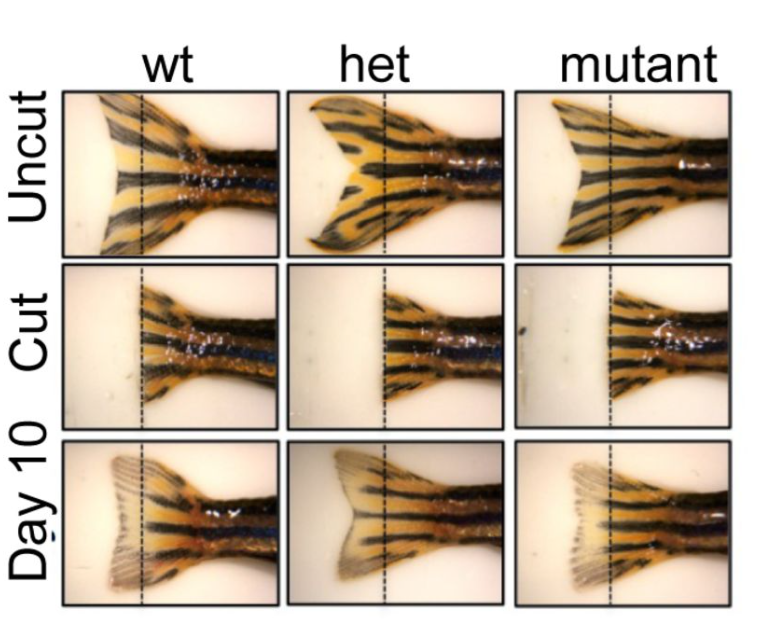
| Stem cells, regeneration & disease modelling
iPSC-derived skeletal muscle spheroids for Duchenne Muscular Dystrophy modeling
Joyce Esposito,Felipe de Souza Leite,Igor Neves Barbosa,Thaís Maria da Mata Martins, Giovanna Gonçalves de Oliveira Olberg,Ziad Al Tanoury,Kayque Alves Telles-Silva,Mayana Cristina da Silva Pardo,Tatiana Jazedje,Raul Hernandes Bortolin,Mario Hiroyuki Hirata,Olivier Pourquié,Mayana Zatz
Navyashree A Ramesh,Laura Buttitta
TGF-beta coordinates changes in Keratin gene expression during complex tissue regeneration
Dipak D Meshram, Yuchang Liu, Molly Worth, Changqing Zhang,Tom J. Carney, Henry H. Roehl
Kosara Smiljanic,Stephanie Constantin,Naseratun Nessa,Stanko S. Stojilkovic
Bao Q. Thai, Stephanie A. Luff, Jared M. Churko, Jonathan N. Young, Christopher M. Sturgeon,Deepta Bhattacharya
Punam Bala,Viswadica Prakki,Rohit Joshi
Modeling Post-Gastrula Development via Bidirectional Pluripotent Stem Cells
Kuisheng Liu, Zihui Yan, Dandan Bai, Rui Jiang, Yan Bi, Xiangjun Ma, Jiani Xiang, Yifan Sheng, Baoxing Dong, Zhiyuan Ning, Shanru Yi, Yingdong Liu, Xinyi Lei, Yanping Jia, Yan Zhang, Yalin Zhang, Yanhe Li, Chenxiang Xi, Shanyao Liu, Shuyi Liu, Jiayu Chen, Jiqing Yin, Xiaochen Kou, Yanhong Zhao, Hong Wang, Yixuan Wang, Ke Wei, Wenqiang Liu,Shaorong Gao
Primitive Hepatoblasts Driving Early Liver Development
Kentaro Iwasawa, Hiroyuki Koike, Hasan Al Reza, Yuka Milton, Keishi Kishimoto, Konrad Thorner, Marissa Granitto, Norikazu Saiki, Connie Santangelo, Kathryn Glaser, Masaki Kimura, Alexander Bondoc, Hee-Wong Lim, Mitsuru Morimoto, Makiko Iwafuchi, James M. Wells, Aaron M. Zorn,Takanori Takebe
Neural crest induction requires SALL4-mediated BAF recruitment to lineage specific enhancers
Martina Demurtas, Samantha M. Barnada, Emma van Domselaar, Zoe H. Mitchell, Laura Deelen,Marco Trizzino
Allara K. Zylberberg,Emma I. Scully,Pei Xuan Er, Hannah Baric, Michelle Scurr,Mian Xie,Thanushi Peiris,Sara E. Howden,Kynan T. Lawlor,Melissa H. Little
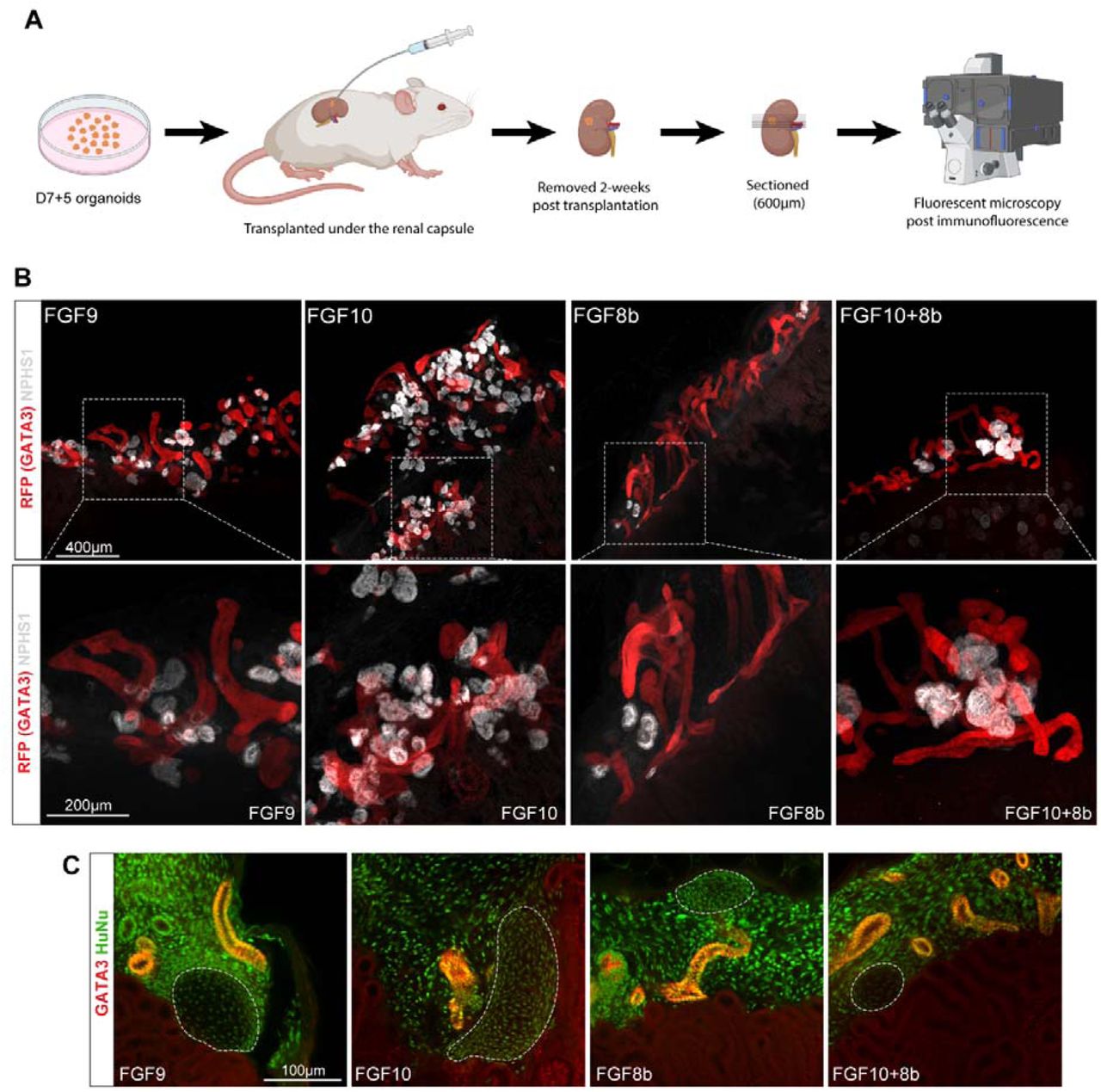
Angelica Varesi, Murtaza S. Nagree, Isabella Di Biasio, Andy G.X. Zeng, Sayyam Shah, Hyerin Kim, Michael Zhang, Alex Murison, John E. Dick,Stephanie Z. Xie
Srdjan Boskovic,Mirjana Novkovic,
Asperous coordinates regenerative timing by regulating damage-induced WNT Signaling
Si Cave,Manashi Sonowal,Chloe Van Hazel,Petra Fromme,Robin E. Harris
Hideyuki Sato,Ayaka Yanagida, Mariko Kasai,Naoaki Mizuno,Eiji Mizutani, Hiromi Yamamoto,Satoko Ishii, Taro Hihara,Kazuto Yamazaki, Ayuko Uchikura, Kazuaki Nakano, Masashi Ito,Hiroshi Nagashima,Hideki Masaki,Hiromitsu Nakauchi
Daniel P. Moore, Heather B. Steele-Stallard, Luca Pinton, Valentina Maria Lionello, Lucia Rossi, Artadokht Aghaeipour, Salma Jalal, Cherry Tsz Yan Wong, Angela Clara-Hwang, Gisèle Bonne, Peter S. Zammit,Francesco Saverio Tedesco
Ashis Kumar, Vignesh Kumar, Agnes Selina, Vrisha Madhuri, Vasanth Thamodaran
| Plant development
Maternal control of RNA decay safeguards embryo development
Gerardo Del Toro-De León, Maria Sofia Trenti, Varsha Vasudevan, Ursula Krause,Claudia Köhler
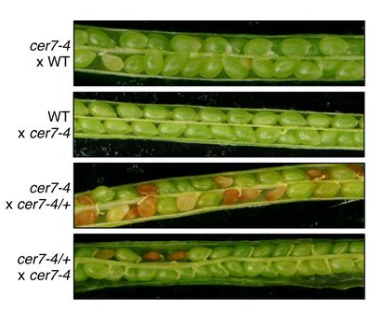
Nicole Szeluga, Noor AlBader, Samantha Pelletier, Kylie Weis, Arielle Johnson, Noah Fahlgren,Mikhaela Neequaye, Gus Vogt, Ryan DelPercio,Patricia Baldrich, Kelsey J.R.P. Byers,Blake C. Meyers,Margaret H. Frank
FLOE1 maintains cellular viscosity in rehydrating Arabidopsis embryos
Sterling Field, John F. Ramirez, Yanniv Dorone, Jack A. Cox, Thomas C. Boothby,Seung Y. Rhee
Analysis of Wheat Spike Morphological Traits Using 2D Imaging
Fujun Sun, Shusong Zheng, Zongyang Li, Qi Gao, Ni Jiang
Alex Wakeman,Tom Bennett
FERONIA defines intact tissue boundaries through cuticle development
Gayeon Kim, Jeongho Choi, Ryeo Jin Kim, Eunkyoo Oh, Seung Yong Shin, Hyun-Soon Kim, Hye Sun Cho, Mi Chung Suh, Hyo-Jun Lee
Urbanization drives genetic and plastic responses of the spotted jewelweed flower morphology
Jerome Burkiewicz, Julie Carvalho, Sophie Caporgno,Joelle Lafond, Celine Devaux, Etienne Normandin, Simon Joly
Pre-meiotic H1.1 degradation is essential for Arabidopsis gametogenesis
Yanru Li,Danli Fei, Jasmin Schubert,Kinga Rutowicz,Zuzanna Kaczmarska, Alberto Linares,Alejandro Giraldo Fonseca,Sylvain Bischof,Ueli Grossniklaus,Célia Baroux
Jim Renema,Svitlana Lukicheva, Isabelle Verwaerde,Stijn Aesaert,Griet Coussens,Jolien De Block,Carolin Grones,Thomas Eekhout,Bert De Rybel,Rhoda A.T. Brew-Appiah, Christopher A. Bagley,Lennart Hoengenaert,Klaas Vandepoele,Laurens Pauwels
Arabidopsis RabGDIs are essential for the asymmetric division of zygotes and embryonic patterning
Gui-Min Yin, Ya-Nan Wu, Weiqi Wang, Shan-Shan Dun, Sha Li, Liwen Jiang, Zi-zhen Liang,Yan Zhang,Feng Xiong
Antagonistic and Synergistic Roles of Tomato AFP3 Isoforms in Hormonal Regulation and Development
Ylenia Vittozzi,Louise Petri, Maurizio J. Chiurazzi, Purificación Lisón,Carmen Grech Hernández, Adity Majee, Naveen Shankar, Meike Burow,Stephan Wenkel
Lf2 is a knotted homeobox regulator that modulates leaflet number in soybean
Chancelor B. Clark,Denise Caldwell, Qiang Zhu, Dominic Provancal, Austin C. Edwards, Qijian Song, Charles V. Quigley,Anjali S. Iyer-Pascuzzi, Jianxin Ma
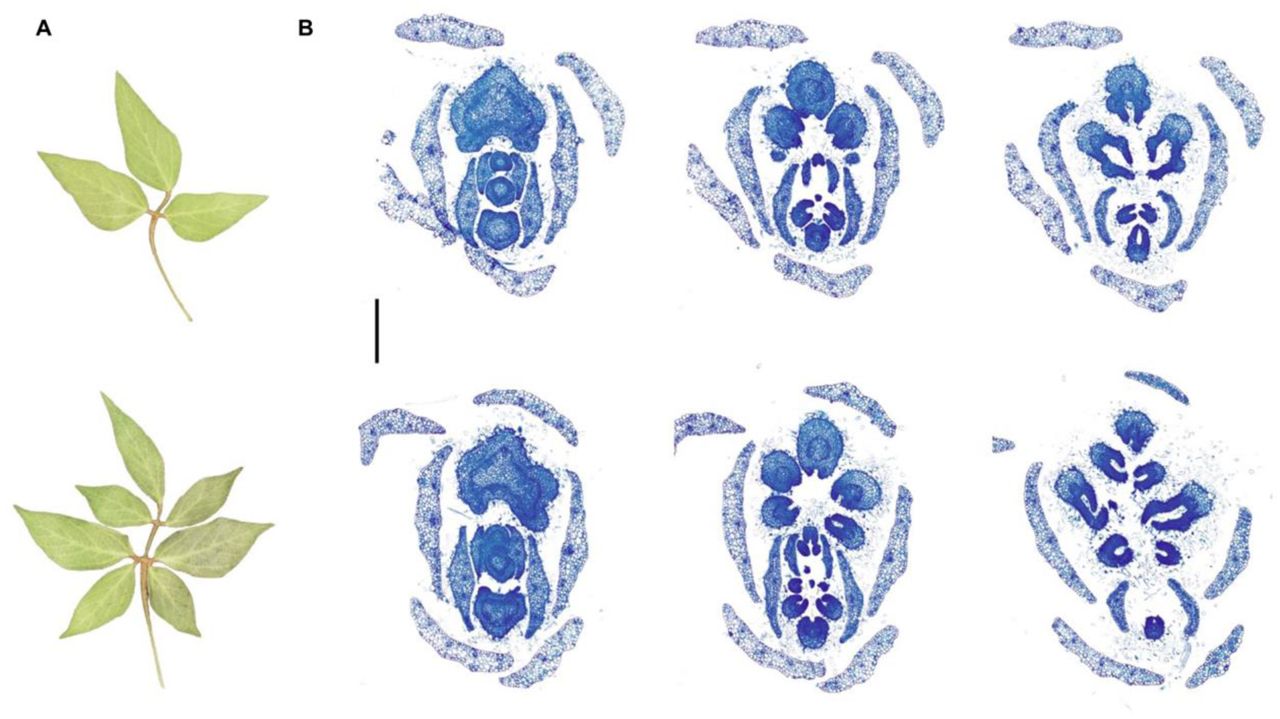
| Environment, evolution and development
Projected warming disrupts embryonic development and hatch timing in Antarctic fish
Margaret Streeter,Nathalie R. Le François,Thomas Desvignes, Jacob Grondin,John H. Postlethwait,H. William Detrich III,Jacob M. Daane
Allan M. Carrillo-Baltodano,Emmanuel Haillot,Steffanie Mutiara Meha, Imran Luqman, Artenis Pashaj, Yun-Ju Lee,Tsai-Ming Lu,David E. K. Ferrier,Stephan Q. Schneider,José M. Martín-Durán
A tardigrade cytochrome P450 perturbs Drosophila melanogaster development
Caitlyn L Perry, Charles Robin
Flora Plessier,Heather Marlow
Sean D. Keeley,Rita Aires,Belfran Alcides Carbonell Medina,Claudia Marcela Arenas-Gómez,Alejandra Cristina López-Delgado,Jean Paul Delgado,Franziska Knopf,Shigehiro Kuraku,Tatiana Sandoval-Guzmán
Maria Adelina Jerónimo,Ana Rita Garizo,Guilherme W Atencio,David Duneau,Patrícia Beldade
Clotilde Gimond,Nausicaa Poullet,Anne Vielle, Emilie Demoinet,Christian Braendle
The evolution of gene regulatory programs controlling gonadal development in primates
Nils Trost,Amir Fallahshahroudi,Ioannis Sarropoulos,Céline Schneider,Julia Schmidt,Noe Mbengue, Eva Wolff, Charis Drummer,Robert Frömel,Steven Lisgo,Florent Murat,Mari Sepp,Margarida Cardoso-Moreira,Rüdiger Behr,Henrik Kaessmann
Andrei Sourakov

Cell Biology
Jiawei Cai, Bohao Zhao, Zhiyuan Bao, Yunpeng Li, Xiaoman Han, Yang Chen,Xinsheng Wu
Zaili Luo, Mingyang Xia, Feng Zhang, Dazhuan Xin, Rohit Rao, Karrie M. Kiang, Kalen Berry, Yu Xiong, Hongqi Liu, Yifeng Lin, Ming Hu, Mei Xin, Jie Ma, Hao Li, Michael D. Taylor, Wenhao Zhou, Q. Richard Lu
Song Hu, Rongao Kou, Zhuojie Su, Guanchen Li, Shutao Qi, Yanxiao Zhang, Haifeng Wang, Ling-Ling Chen, Hongtao Yu
TGF-β serves as a critical signaling determinant of liver progenitor cell fate and function
Chenhao Tong, Tao Lin, Han Wang, Carolina De La Torre, Hui Liu, Chen Shao, Seddik Hammad, Roman Liebe, Matthias P Ebert, Huiguo Ding, Steven Dooley, Hong-Lei Weng
The Sphingosine-1-phosphate pathway is differentially activated in human gestational tissuesv
Magdaleena Naemi Mbadhi, Hideji Fujiwara, Ruth Gill, Kaci T. Mitchum, Cici Lin,Nandini Raghuraman,Antonina I. Frolova
Haruna Gekko, Ruri Nomura, Daiki Kuzuhara, Masato Kaneyasu, Genpei Koseki, Deepak Adhikari, Yasuyuki Mio, John Carroll, Tomohiro Kono, Hiroaki Funahashi,Takuya Wakai
“PDGFRα is required for postnatal cerebral perivascular fibroblast development”
Hannah E. Jones, Kelsey A. Abrams,Katherine A. Fantauzzo,Julie A. Siegenthaler
Baylea N. Davenport,Rebecca L. Wilson, Alyssa A. Williams, Jaimi A. Gray, Edward L. Stanley, Helen N. Jones
Pcbp1 orchestrates amino acid metabolism burst during the naïve-to-primed pluripotency transition
E. I. Bakhmet,E. V. Potapenko,O. Y. Shuvalov,A. A. Lobov,E. A. Repkin,N. E. Vorobyeva, A. N. Korablev,A. S. Zinovyeva, A. A. Kuzmin,N. D. Aksenov,A. T. Kopylov,G. Wu,H. R. Schöler,A. N. Tomilin
Siddharth Acharya,Eric Hanssen,Veronica B. Botha, Tia M. Smith,Sahan Jayatissa, Zlatan Trifunovic,Lucy A. Bartho,John E. Schjenken,Tu’uhevaha J. Kaitu’u-Lino,Anthony V. Perkins,Joanna L. James,Kirsty G. Pringle,James C. Bouwer,Roger Smith,Joshua J. Fisher
H Aravind, Vivek Kumar, Manish Jaiswal
Patched regulates cell cycle and tissue architecture in C. elegans gonad
Johanna Farley, Madeleine Schwalbe, Fredrik Forsberg, Aqilah Amran,Sandeep Gopal
Cross-species insemination reveals mouse sperm ability to enter and cross the fish micropyle
Suma Garibova, Eva Stickler, Fatima Al Ali, Maha A Abdulla, Abbirami Sathappan,Sahar Da’as, Lilian Ghanem, M Nadhir Djekidel, Rick Portman,Matteo A Avella
Juvenile hormone degradation enzymes have shared and unique requirements in Drosophila development
Harry Siegel,Creehan Healy,Krystal Goyins,Amina Jumamyradova, Jie Ying,Alexey A Soshnev,Rebecca F Spokony,Lacy J Barton
MEIOC prevents continued mitotic cycling and promotes meiotic entry during mouse oogenesis
Esther G. Ushuhuda, Jenniluyn T. Nguyen, Natalie G. Pfaltzgraff, Matthew Kofron,Maria M. Mikedis
Anna Frey,Laurin Ernst,Friedericke Fischer,Lale Alpar, Yohanns Bellaïche,Anne-Kathrin Classen
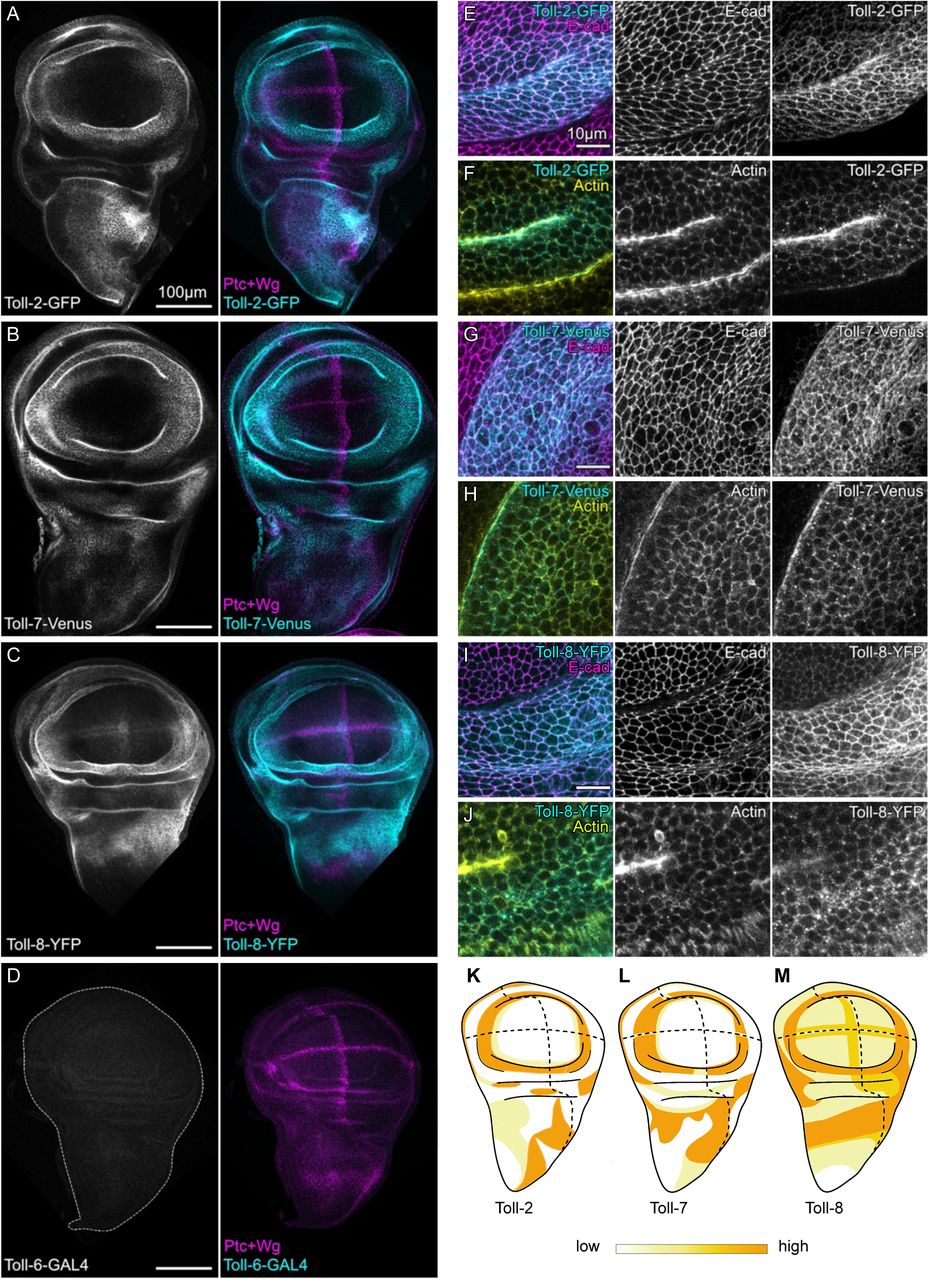
Abhrajit Ganguly, Cynthia M Carter, Aristides Rivera Negron, Hua Zhong, Alvaro Moreira, Matthew S. Walters, Lynette K Rogers, Y S Prakash, Trent E Tipple, Arlan Richardson
Melinda E. Snitow, Sylvia N. Michki, Fatima N. Chaudhry, Rachna Dherwani, Jeremy B. Katzen, David B. Frank, Jarod A. Zepp
Shalini Chakraborty, Jack Govaerts, Abigail Hawke, Matthew Werbelow,Todd Schoborg
Taurine Transporter SLC6A6 Expression Promotes Mesenchymal Stromal Cell Function
Christina M. Kaszuba, Sonali Sharma, Benjamin J. Rodems, Cameron D. Baker, Palomi Schacht, Takashi Ito, Kyle P. Jerreld, Chen Yu, Edgardo I. Franco, Emily R. Quarato, Francisco A. Chaves, Jane L. Liesveld, Laura M. Calvi, Hani A. Awad, Roman A. Eliseev,Jeevisha Bajaj
Toru Suzuki, Yuriko Sakamaki
Dolutegravir Developmental Toxicity is Mitigated by Magnesium and Folate in Zebrafish Embryos
Robert M Cabrera, Ahmed Mohamed, Ryoko Minowa, Katheryn A Neugebauer,Daniel A Gorelick
Shih-Chi Li, Yu-Chi Lin,Chung-Der Hsiao,Shyh-Jye Lee
Eloïse Bertiaux, Vincent Louvel, Caitlyn L. McCafferty, Hugo van den Hoek, Umut Batman, Souradip Mukherjee,Lorène Bournonville, Olivier Mercey, Isabelle Mean, Adrian Müller, Philippe Van der Stappen, Garrison Buss, Jean Daraspe,Christel Genoud, Tim Stearns,Benjamin D. Engel,Virginie Hamel,Paul Guichard
Modelling
Alejandro Golfe, Natalia P. García-de-la-puente, Adrián Colomer, Valery Naranjo
Emergence of cellular nematic order is a conserved feature of gastrulation in animal embryos
Xin Li, Robert J. Huebner, Margot L.K. Williams, Jessica Sawyer, Mark Peifer, John B. Wallingford, D. Thirumalai
Generative epigenetic landscapes map the topology and topography of cell fates
Victoria Mochulska,Paul François
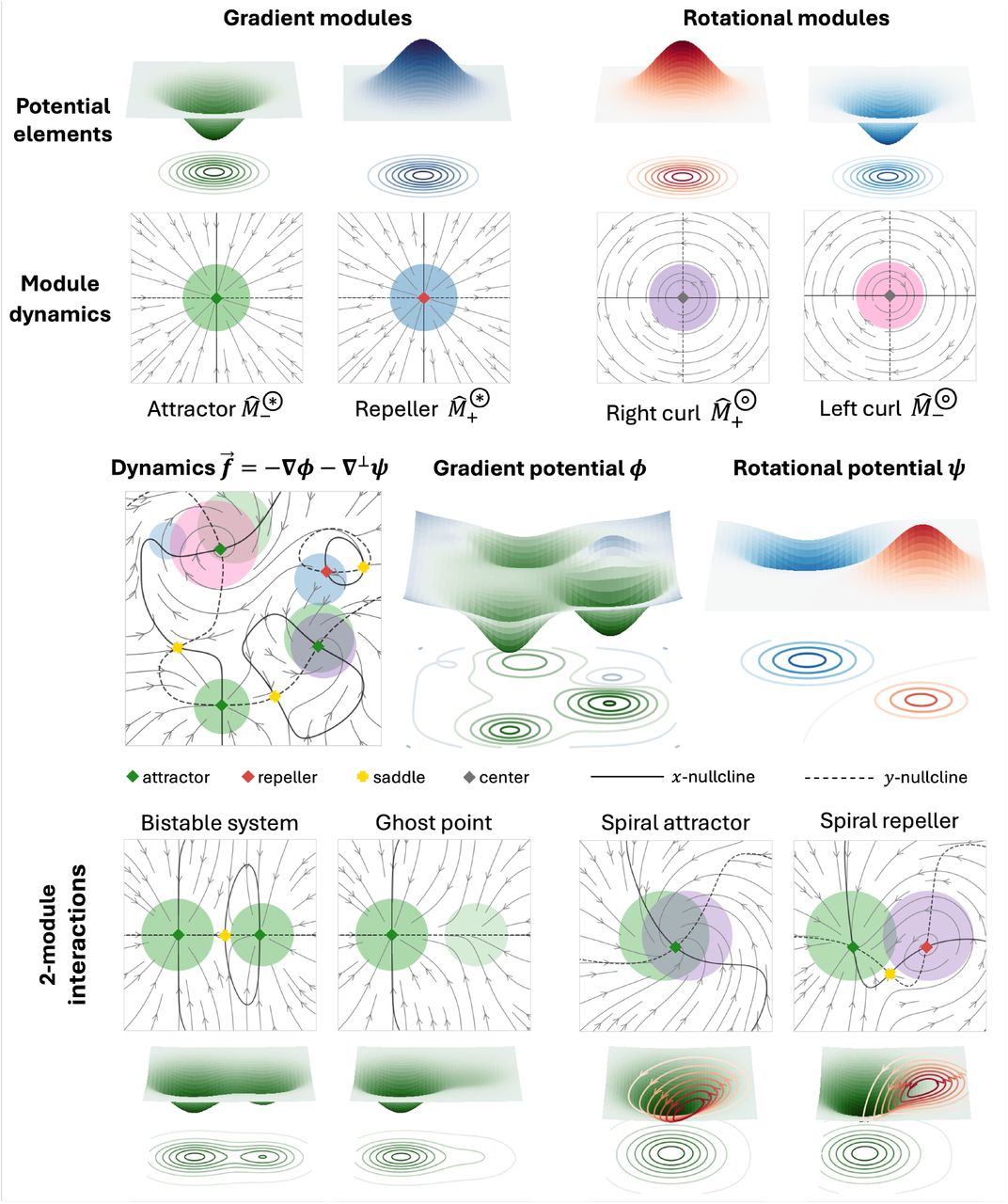
Tools & Resources
A cell atlas of the developing human outflow tract of the heart and its adult derivatives
Rotem Leshem, Syed Murtuza Baker, Joshua Mallen, Lu Wang, John Dark, Andrew D Sharrocks, Karen Piper Hanley, Neil A Hanley, Magnus Rattray, Simon D Bamforth, Nicoletta Bobola
Stanley E. Strawbridge,Lawrence E. Bates, Connor Ross, Kenneth A. Jones,Takuya Azami,Tim Lohoff,Maike Paramor, Vicki Murray,Ana Luíza Cidral, James Clarke,Maria Rostovskaya, Ge Guo,Jennifer Nichols
Electroporation-Based Gene Delivery and Whole-Organoid Imaging in Human Retinal Organoids
Keevon Flohr, Michael Janecek, Lingyun Wang, Vicente Valle, Shaohua Pi, Rui T. Peixoto, Susana da Silva
Shinichiro Ogawa, Mina Ogawa, Jeff C Liu, Abolfazl Dadvar, Britney Tian, Xinyuan Zhao, Ian Fernandes, Kentaro Minegishi, Kenichiro Takase, Yuichiro Higuchi,Hiroshi Suemizu,Ian McGilvray,Sonya MacParland,Gary Bader
Long-term ex ovo culture of Caenorhabditis elegans embryos
Clover Ann Stubbert, Cherry Soe,Pavak Kirit Shah
Derivation of human post-mitotic cardiomyocytes from tetraploid iPSCs
Ittetsu Nakajima, Mitsuyoshi Shimane, Grace Holmstrom, Yuichiro Miyaoka
Kayque Alves Telles-Silva, Lara Pacheco, Sabrina Komatsu, Fernanda Chianca, Gustavo Chagas, Gabrielly Cristine Martins, Maria Gridina, Daria Panchenko, Valdemir Melechco Carvalho, Elia G. Caldini, Veniamin S. Fishman,Michelle Arkin, Ernesto Goulart, Mayana Zatz
Ramona Brunner, Mila Grinblat, Aurelie Moya, Sylvain Foret, David C Hayward, Bruno Lapeyre, Eldon E Ball,Ira Cooke,David J Miller
James Christian Miller, Prashanna Koirala, Maria Fernanda Argote de la Torre, Marjan Farsi, Jaret Lieberth, Rabina Shrestha,Joshua Bloomekatz
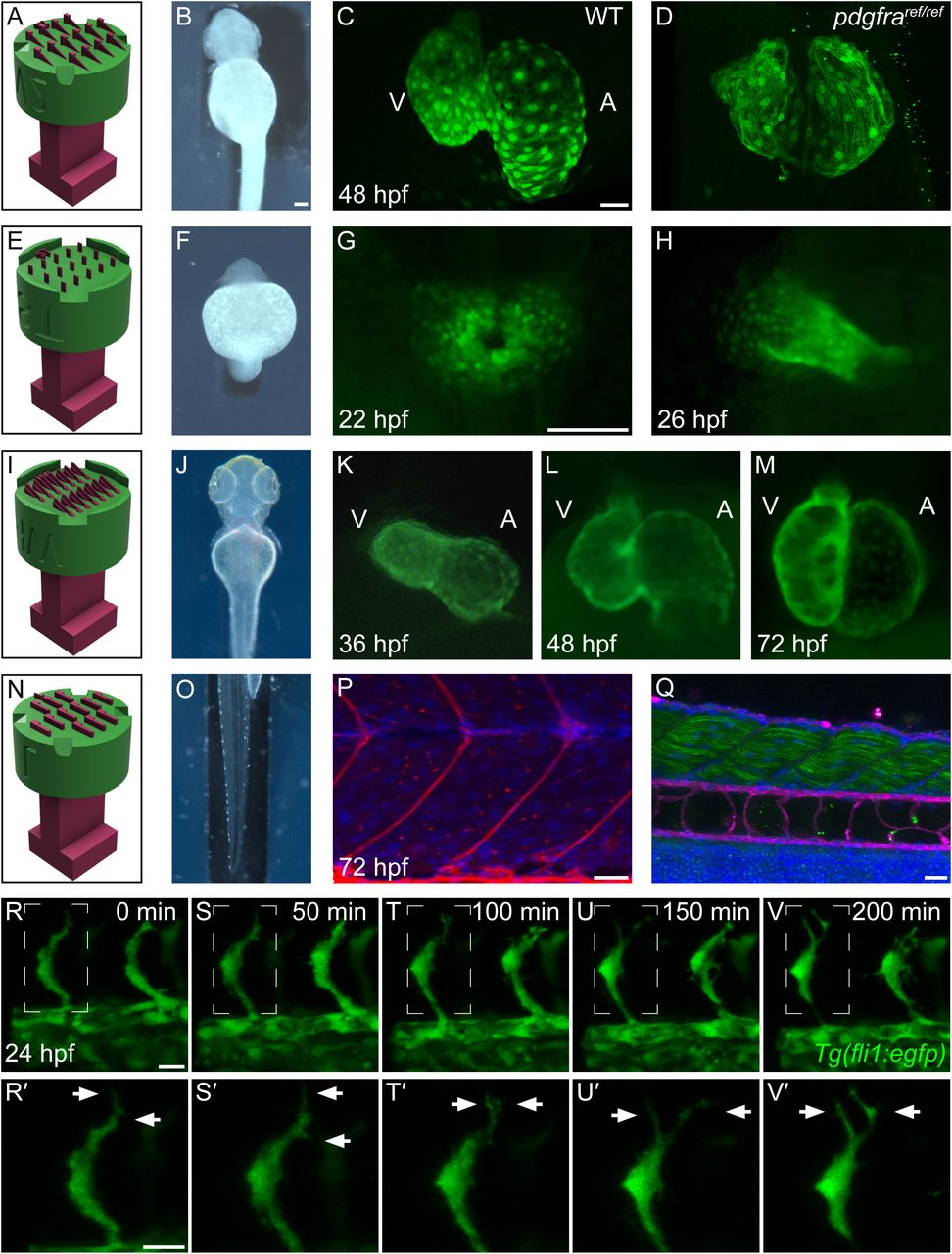


 (No Ratings Yet)
(No Ratings Yet)
 (4 votes)
(4 votes)
